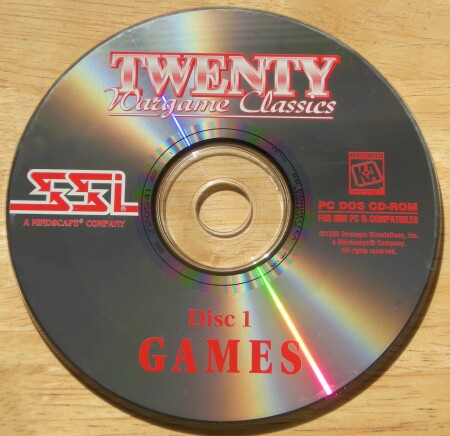
Actual Game
|
Classics
Battles of Napoleon
1-Click Macintosh
(SSI 1996) |
|
The Games
This is a fantastic collection from three of the premier wargame software houses from the mid 80s to mid 90s, namely, SSI. SSG and Impressions. As you will see the twelve games included in the collection touch on virtually the entire history of warfare from AD 1600 through Korea. The styles of the various games are as rich and diverse and the periods of history they cover. Taken as software, this collection accurately portrays the state of computerized wargaming from the formative years of the PC until just before the release of Windows 95. In other words, this collection represents classic gaming. Here follows a brief description of every title included in the Definitive Wargame Collection.Battles of Napoleon (SSI 1989)
By far this game has the best AI of any title dealing with the Napoleonic conquests. Battles is also a very realistic war game and hosts the most famous battles of Napoleon's career, namely Borodino, Waterloo, Quatre Bras, and Auerstadt. A great feature is that you can design your own. You have the ability to play as either the French or the Allies. For both sides all aspects of the battles are present, from cavalry charges to artillery barrages, to infantry squares, and so on.There are phases to each turn: the Objective phase, the Leader phase and the Movement phase, which is quite close to what was happening in reality. At first, you set an objective for every leader (for example, you give Soult the Pratzen Height as an objective). Then, in the Leader phase, you will establish a place for each leader (for example, place Soult in the second regiment of his corp d'armee). And, after that, you begin to rock in the Movement phase, where you order your units to move, fire, melee/charge and so on.
For its era, Battles offers the best way to view a battle: square-shaped units, viewed from top-down make it easy to see what's going on in one of the two views - the Tactical view (very close) and the Strategic view (very far). You'll see how much difference this makes if you ever try to play Waterloo (a game contemporary to Battles). It is very easy to manage a battle and even make some nice moves out there.
Speaking of nice moves, you are really going to need some. Battles allows you to customize a battle, but with the default options, things will be very close to reality, very hard for the French, that is. BON is much easier when playing for the Allies (try to play the battle of Essling), but much more rewarding and interesting when playing for the French. The battles are very closely recreated and quite similar to the reality.
Battles offers you not only strategic control, but also tactical control. You can order your units to enter a certain formation, order batteries to limber&unlimber and so on. This is something very important, as any formation has advantages and disadvantages e.g. units that form squares can easily support a cavalry charge, but are vulnerable to enemy fire.
Realism, historical accuracy and AI counter-tactics come at a price. The sim has a rather steep learning curve. However, if you have the dedication to master it you will find Battles of Napoleon is unrivaled in its field, then or today.
Battlefront (SSG 1986 - 1995)
Panzer Battles
Rommel
Halls of Montezuma
MacArthur's War
For those not familiar with it, Battlefront is an operational level system that had been around for 10 years. The first games in the series were for the Commodore 64 and Apple II followed by the IBM and then the Mac. The best feature of the Battlefront series is that the user issues action orders (assault, defend, reserve, etc.) to groups of units but does not actually control each unit. While the unwanted actions of individual units can be maddening, I think the system accurately reflects command and control (or lack thereof) in World War II battles. The interface also made large battles easier to manage since the players weren't controlling each unit on a hex by hex basis.The objective of each game in the series is to obtain the highest number of victory points. This is done by capturing objectives, destroying enemy battalions, while preventing the destruction of your own battalions. In addition you are the commander of all units and all this entails. That means there is the uncertainty of command separation. You truly have little direct control over the location of battalions. Based on your orders, they will position as themselves as best they can. Also, as the commander you are responsible not only for combat but also supply and management of resources. You need to stay aware of unit losses, supply and administrative levels of each regiment and act accordingly.
Combat takes into account a wide array of realistic factors such as the experience of the unit; supply state; administrative level; off-board support allocated; support from other regiments/battalions; combat bonuses; brittleness of a unit. Combat bonuses are probably one of the most important items to consider. Combined arms attacks (i.e. attack by artillery, armor, and infantry) gets a bonus. Off-board support is counted as artillery. This is an important combat bonus to have in this game unless you are attacking a depleted/routed unit. The movement of units is handled by the computer and is based on administrative level; experience level; supply level; leadership level; current orders; small random factor.
As I said, to make the series even more realistic you do not have total control over each unit. During the madness and fog of battle a commander can essentially only hope his orders are followed to the letter. It is entirely appropriate that you can't just slug away at an opponent. It is as much an asset management game as it is a war game. But then, war really does boil down to the logistics of the situation. You need to watch unit fatigue, losses, supply lines and states. You need to give units rest/refit at the proper time. You need to keep HQ's close (but not too close) to the action to support the units. You need to maintain awareness of your supply and not perform unnecessary attacks as these will drain your supply. I also like the fact that just because I order a unit to take Hill A, something (i.e. the enemy) might intervene to divert that unit.
The scenarios range from even to outright hopeless. However, you can experience this from either side and have the computer play the other. If you are willing, you can edit the basic scenario to give is more play balance. The longevity of the series was sustained in that you could create your own scenarios.
Carrier Strike (SSI 1992)
This game follows in the footsteps of SSI's Second Front (Russian Front WW2) and continued their series of grand tactical/strategic simulations set in World War 2. It is aimed at people who are not so much interested in simulators but rather in the machinery which gets opposing forces into battle in the first place.There are two players (Allied, Japanese) and either, both, or neither can be played by humans. The game runs 26 months of game time and allows for one battle of up to four game days duration each month, so the Campaign Game is long.Turns are 20 minutes each. Game units are Task Forces (Surface Action, Air Combat--your carriers, Transport, Bombardment), Strikes (air units), Airbases (land installations mainly run by the com- puter for both sides) and submarines, which are also managed by the computer.
You can also play single battles (Coral Sea, Midway, Marianas etc.) of which there are six.
Clash of Steel (SSI 1993)
Clash of Steel was made for those looking for an in-depth wargame that covers the entire spectrum of the European theater in World War II but don't want to invest months completing it. The entire war (on both European fronts) can be completed in less than ten hours assuming you're not a novice. The number of turns run from two to eleven with "phased" increments equaling two months of real time across a map that is displayed in hefty fifty mile hexes. Even though the interface accommodates both mouse and keyboard, there's no doubt that using the former is the way to go. Simply click on a unit followed by the desired destination and just that easily your movement is executed. It's even simpler on air strikes. Select the target, then the strike command, and the nearest available air unit will attempt to carry out your order. Of course, hex-by-hex movement is still an option if you like to ride with your troops across the multi-faceted, realistic terrain. The game fairly represents both sides of the conflict so if you're hankering to rewrite history with a German victory, go for it! The challenges offered by Clash of Steel are steeply ingrained with tons of accurate logistical information, equipment, forces, weather considerations, personnel and optional campaign lengths (six different start dates are supported).Conflict Korea (SSI 1992)
Conflict: Korea is an operational level simulation of the Korean War. In addition to covering the first year of that conflict between 25 June 1950 to 22 May 1951, there is a hypothetical scenario which sees hostilities resuming between the two Koreas in 1995.Four scenarios can be played, taking either side. The first three are based on the historical conflict - The Dragon Wakes (Jun 1950 - Jun 1951), starting with the invasion of South Korea by the North Korean People's Army; Operation Chromite (Sep 1960 - Jun 1951), re-enacting MacArthur's inspired Inchon landings and the Pusan perimeter break-out; and Cold Steel (Nov 1950 - Jun 1951), showcasing the massive intervention by the Chinese People's Liberation Army. The final scenario, Tomorrow's War, has the NKPA pushing south in 1995 when the US is heavily involved elsewhere and plays a limited role (although the presence of USAF, USN, and USMC air units more than make up for the absence of land forces).
Conflict Middle East (SSI 1991)
Subtitled "The Arab-Israeli Wars: 1973-?", Conflict: Middle East is SSI's detailed and authoritative simulation of both the Yom Kippur War of 1973, and a hypothetical all-out Arab attack launched sometime "during the Nineties."The campaigns are fought on a detailed brigade/division/squadron level, across a richly colored hex-grid map of the middle east that stretches from Cairo to Damascus. Victory points are awarded for terrain possession, and some games are interrupted by political intervention from the outside world. You have the option to override this game's interrupts and continue hammering the enemy, but in that case the victory conditions are no longer valid.
Conquest of Japan (Impressions 1992)
Conquest of Japan is a strategy title in which you must conquer your opponents cities on the Island of Honshu in 16th century Japan. The ten cities must be occupied to win, you do this by forming armies to defend your five cities and attack those of your opponent. When a city is taken, any mobile army that came from that city is automatically disbanded. In this way, potentially overwhelming forces can be routed by conquering their cities -- but only if you can conquer the city before its army reaches its target. Depending on how the cities are located at the start of the game, you may find this to be a key part of your campaign strategy. When armies battle, the game switches from the strategic map, to a tactical one. Formations, unit orders, and moral are factors in the tactical battles. Overall an interesting offering from Impressions.D-Day: The Beginning of the End (Impressions 1994)
As you might expect this is a strategy wargame in which you re-enact the Allied invasion of Fortress Europe in 1944. D-Day was initially stereotyped as a real-time arcade game but that is quite inaccurate. It is not real-time in the same way as a flight-sim or arcade-fest. All of the player's actions and commands take place while game time is paused. The real-time element of D-Day is in how the game responds to your orders; after you take all the time you want to survey the situation, and make the appropriate command decisions, you unpause the simulation and watch your units respond to your orders in real-time. As time passes, if events progress to the point that you want to enter new orders, you can pause the game instantly.Only one part of D-Day features this real-time element. D-Day simulates both a grand strategic view of the Normandy campaign, and a tactical view of each battle fought in that campaign. Only the tactical, Micro Miniatures level of the game is in real-time; the grand strategic level is turn-based, with each turn representing half of a day. The scope of the grand strategic view (the whole of central Europe is represented, from England to Germany) makes it a natural for turn-based play. As you can infer, D-Day is aimed at the more serious fan of the genre.
Decisive Battles in American Civil War (SSG 1989, 1990, 1992)
Volumes I - III
Decisive Battles in American Civil War games were an early attempt by SSG to offer an accurate portrayal of a war pushed back into the limelight many years later with Sid Meier's Gettysburg. Even if Decisive Battles does not have impressive 3D graphics and sounds, the collection is still a solid campaign that accurately reconstructs the most crucial battles of the American Civil War. The underlying engine is basically the same throughout the series, with improvements to the graphics and interface in each volume, which gives a feel of familiarity to gamers. The AI is an evolved version of SSG's celebrated Battlefront system. The system works well in this context in that you can select every single unit or entire groups of units under the command of a leader.As you might expect, leaders are particularly important for the resolution of the battle. The simulation takes into consideration the effects of terrain and weather, and the ability of each leader is either enhanced or penalized based on his current situation.
Global Domination (Impressions 1994)
Global Domination is almost always called a risk type game, which it is in the same way that History of the World, Axis and Allies, and Diplomacy are, in that you are one of several countries that try to take over an area based map with generic playing pieces.Each of the above games has a twist on the concept, and Global Domination's is a tactical one. You build armies out of different kinds of forces (infantry, mech. infantry, airmobile infantry, light armor, heavy armor, light artillery, heavy artillery, air combat, air strike, air defense) and send them off to fight. They fight either in one abstract combat, a more prolonged abstract combat that can take several turns (and permits you to pull troops out at a penalty), or a miniatures-style combat.
You can have up to five opponents, chosen from historical personalities. Refreshingly, they seem inclined neither to line up and let you slaughter them one by one nor to all gang up on you at once. You can make alliances and offensive pacts with them, but whether they accept or not is completely out of your hands (no sweeteners).
The game takes place either on earth or a randomly generated world. Areas have an economic value ranging from one to three. There seems to be an area for every country in the world (except for the city-states) plus most of the individual United States and Canadian Territories (France, England, Australia, Germany, and, Russia, get multiple areas too).
One interesting system is Revolt. Countries have unrest levels that respond to various conditions, particularly conquest and the use of special forces. Countries with high unrest pick away at their garrisons, and if the garrison is eliminated (or absent), they revolt. This causes the territory to be impassable for from a month to a year. Further, revolt is contagious.
The movement system is unique among computer games of the time. Each turn, you invest resources in buying land and sea movement for the next turn. In the early turns especially, this can be your largest expenditure, and thus calls for quite a bit of forethought.
All in all, quite a bit of fun.
Gold of the Americas (SSG 1989)
One of the few SSG classics that are not based on World War II, Gold of the Americas is an excellent strategy/conquest game set in the Americas. Unlike better-known games of this gene (e.g. Sid Meier's Colonization, Pirates!), Gold emphasizes strategic-level decisions and diplomacy over tactical-level colony management.The gameworld consists of North and South America, divided into 31 land and 4 sea areas. There are 7 types of units to choose from (Armies, Colonists, Trading Ships, Warships, Privateers, Slaves and Explorers), all of whom are crucial to success. You play one of the European powers vying to control the New World: Spain, Portugal, England and France. Your mission, in game terms, is to end the game with the highest amount of Victory Points (VPs) at the end of 30 turns (equivalent to 300 years); at the end, you get 1 VP for every colony level you have.
Being a strategic-level game, there is no movement of units as such in Gold: everything is "placed" on the map. Ships stay at sea unless they are moved, and all armies and warships only last 1 turn (10 years), so there is no way to build up a huge fleet or invasion force -- all your decisions must be made in the context of the current turn, and how to maximize the use of these transient units. Trading is simple: you just place your trade ships in any sea area you wish, and hope that your competitors don't sink them or Privateers don't loot them.
The hallmark of Gold which makes it much more historically accurate than other Colonial-era games, is the taxation module. True to history, you have two coffers in the game: the main Treasury and your Secret Funds. Taxation is assessed as a percentage of your previous turn's earnings (which goes directly into Treasury). The failure to meet your tax bill results in less interest from the King, which in turn results in less resources you receive from him (armies, etc.) Trading, raids and exploration all have the potential to add funds to your Secret Fund, which you can use for whatever you want. If you let it build up too high, you will rouse suspicion form the motherland, which might mean a visit from the King's Auditing Department. Needless to say, careful management and allocation of the two coffers are crucial to winning the game with high VPs.
Overall, Gold is a great strategy game that is both historically accurate and addictive. Perfect for fans of SSI's No Greater Glory, and SSG fans in general. SSG's famous AI does not disappoint; it is one of the best AIs you'll find in this type of game, bar none.
Pacific War (SSI 1992)
The complexity of Gary Grigsby's Pacific War will test the tenacity of any veteran wargamer brave enough to tackle it. With that in mind, any novice or weekend warrior is forewarned to enter at your own risk. The time spent learning every aspect of this game may literally exceed that of the playing time for other war games. Examples of the incredible detail associated with the game include: more than 100 Allied and 50 Japanese ships, each with at least ten rated attributes; fifty or so checks to perform during the orders phase (includes half a dozen categories); around forty basic checks during the execution phase; nearly 200 bases and more than 300 identifiable ground units to control; more than 200 leaders, a full complement of combat aircraft, a manual that runs 160 pages and a gaming world that covers the entire Pacific theater of World War II from Asia to Australia to the United States. There's a five page tutorial included with the manual which easily could have (and should have) equaled the fifty-plus pages of rules. Gary Grigsby's Pacific War is definitely not for the casual gamer who wants to pop in and out of the game a few times and walk away whistling a happy tune of satisfaction. To succeed at the game requires a self-disciplined serious commitment to invest lots of study time on how to play comfortably.Is the game fun? Once you've passed the rigors of initiation (the learning curve) into the game's heart and soul, micro-management to the max, then the answer is a resounding "you betcha!". If your idea of fun doesn't include a week of study time augmented with small doses of frustration, then maybe this one isn't for you. As to game play, the game design is for two players, you against the computer or another human, full control by the computer, or an interesting alternative where you assign overall tasks to any or all of your Headquarters and then turn over operations to the computer to execute the orders. Most seasoned war game veterans will undoubtedly scoff at the latter idea and accept the considerable challenge of hands-on control of every single aspect of operations such as managing resources, coordinating every ground or air strike, reconnaissance missions, submarine forays, distribution of supplies, assignment of leaders (different personality and aggressiveness ratings), fleet mobilization and tactical planning, targeting, and so forth.
The game covers the entire length of WWII in the Pacific arena (December 7, 1941 to August 1945) in a huge week-at-a-turn campaign and provides a good number of shorter "full war" experiences dependent upon when you "enter" the war. A couple of even shorter scenarios (4-months and 2-months) are available if desired. Gary Grigsby's Pacific War is highly recommended but it's not a simple walk in the park.
Panzer General (SSI 1994)
The Generals series, which began with Panzer General, is hailed as the best wargame series produced by S.S.I.Panzer General possesses magnificent graphics for a wargame of 1990s vintage. The units are easily recognized thanks to the special attention given to detail, and the strategic maps where the forces advance from are of impeccable quality. This CD version of the game adds bonuses like authentic video-footage from the WWII archives, and CD quality sound for music and sound effects. Of course, these features are expected in modern games. However, in 1994, such audio/video attention for a wargame was exceptionally rare.
The game features animation during the battles. When units attack, two circles appear on the screen showing the units and the landscape, indicating the type of terrain. The explosions are well rendered with fire, plumes of smoke and debris flying from tanks and other terrestrial units. This remains true for the air and naval units.
Panzer General is not limited to terrestrial confrontation, it employs all the technology offered by the navies and air foreces at that time. In all, there are more than 350 types of armaments which confront each other on land, sea and air.
Right from the start the game offers two possibilities. The player can start a campaign as a German general who must prove himself first by seizing Poland in 1939. If victorious, the player can combat on the front of his choice with his victorious armies. Soon, France, Belgium, Norway, North Africa and the Eastern Front will be defeated if the conquering wave continues. This could even reach England and the United States.
The second possibility is to chose from 40 different scenarios. Each scenario increases in difficulty and offers a wide range of situations; the result is a game that can eat easily up an entire day.
Finally, as in most war games, there exists yet other details that we have not discussed. Among them are the fuel and arms supply for your units, men and material replacement, buying new units, weather forecasts and types of terrain. Panzer General offers vast possibilities that render the game very attractive.
Panzer General introduced a new concept to wargames, borrowed from the world of role playing ames: Prestige. The war version of experience points, prestige increases at the same time as your exploits (conquered cities, destruction of enemy units) whereas it decreases when you lose units. It is of great importance because your buying of units, replacements and new equipment for the existing units depend directly on your prestige. You will not be able to carry out an action if the cost of the action is more than your prestige level.
If you have never played a wargame because you think they are all boring and impossible to understand, this is the game that will change your mind. If you are a die-hard wargamer, Panzer General may still be an interesting proof of what it takes to draw in a non-wargamer without sacrificing the gist of what makes a wargame fun. A classic even after 15 years.
Reach for the Stars (SSG 1988)
Reach for the Stars is the original spaceploitation game. The player has the opportunity to name his civilization and those of his (up to three) AI opponents before he begins his attempt at galactic domination. The game is sleek and accessible by modern standards: the 2D galaxy map is marked only by planets and their names in few different colors. Also, there is no diplomacy and no player control over tactical combat.What remains is a hard-core game of grand strategic and economic production. The player must tweak his planets, build ships, research new tech levels, and deploy fleets. A nice feature of the game is that just about all of the underlying dynamics can be altered and customized by the player, which means that Reach for the Stars is infinitely replayable.
Sword of Aragon (SSI 1989)
Regarded by many wargamers as the best fantasy wargame ever made, Sword of Aragon is a true precursor of later classics Conquered Kingdoms and SSI's own Fantasy General. Set in the Aragonian Empire, you are heir of the late Duke of Aladda, and your task is to once again extend Aladda's dominion and eventually crown yourself king in Tetrada. Executing your father's will properly means raising and equipping an army, then venturing forth to do battle against the dastardly foes threatening Aladda and its surroundings. Your success in Sword of Aragon depends on careful allocation of precious resources, astute military planning, and deft combat maneuvers. Knights, priests, warriors, mages, rangers, cavalry, infantry, and bowmen are some of the units you can recruit, and in true AD&D fashion, you can equip them with different armor types. Nothing in the game will strike anyone today as a big deal, but back in 1989 it was a revolutionary title that attracted many non-wargamers to the genre. Excellent AI and addictive gameplay help Sword of Aragon remain one of the most playable and replayable fantasy wargames ever.War in Russia (SSI 1993)
War in Russa covers the epic struggle between Germany and Russia 1941-45. The game was designed by Gary Grigsby, the most prolific wargame designer in the relatively short history of computer wargaming. This is Mr. Grigsby's third treatment of this subject for SSI. The first, with the same title, was an 8-bit effort in 1984. In 1990 came Second Front, one of the first of the 16-bit wargames (along with 360's Harpoon and Panther's Fire Brigade.) War in Russia owes much of it's structure to this second effort. In reviewing this game it will thus be necessary to compare many of it's features to this classic predecessor.For its time WIR was THE wargame covering the eastern front. For scope, detail, and options it simply has no competition. While WIR essentially uses the same game system and data base that Second Front did it has so many new features, refinements and improvements that it is well worth the investment for wargamer interested in the period, even if he or she already has Second Front. This period of time seems to be the age of the sequel, be it movie, book or game. Games such as Carriers at War, Railroad Tycoon, Warlords and Pirates have had sequels released relatively soon after the initial product. In terms of overall value War in Russia more than holds it's own as an improvement over an existing game system.
Wargame Construction Set II: Tanks (SSI 1994)
Tanks is a tactical (platoon/section level) wargame of the 20th century mechanized warfare. The players in Tanks! control brigade or regiment sized forces in most scenarios. The game is played on a very high quality hex-style board representing some real battle area in the world. The scale of the map is 250 meters/hex and the game is played in turns, with 5 minutes per turn. The game can be played in a 'mission mode' or a full campaign. In the campaign, conditions of subsequent missions are dependent upon the results of previous missions. The game goal is simple - take out your enemy and his flag while protecting your own. This is classic wargaming at its tactical level best.Tanks has scenarios in 12 different time periods starting with World War One all the way through the Gulf War. The Korean conflict and the Arab/Israeli War are some of the best scenarios. There is also a random scenario generator will create a custom map in one of three climates, build an order of battle for opposing sides from the 1,300+ units available, and assign objectives for each combatant. Each scenario is created to the user's specifications.
10 ready-to-play scenarios are provided in the game or you can create your own with the scenario editor. There is also a two-player mode to play fast action scenarios that last 30 to 90 minutes. Additionally, a campaign mode is available to allow the user to fight a progressive series of small battles with the same units until reinforcements must replace losses.
All types of units used in warfare throughout the 20th Century are available, including infantry, cavalry, motorcycles, bicycles, and helicopters. In addition, weather, terrain, day/night effects will have a strong impact on the game play, plus they enhance realism.
In short, Tanks offers essentially limitless small scale tactical armored confrontations using the various tanks and tools of mechanized warfare from 1918-1991; a fun outing.
Warlords 1 (SSG 1990)
In Warlords, SSG's designers took a break from historical data-crunching and produced a huge, make-believe strategy game that sprawls across a vast area and pits you against eight crafty, aggressive opponents. The quarrelsome land of Illuria has been held together by a ramshackle peace treaty which has just collapsed as the game begins. Each of the eight warring fiefdoms has but one objective: total domination of all the others, which means conquering eighty fortified cities and stomping seven opposing armies.The terrain of Illuria is marvelously varied, with long mountain ranges pierced only by a few strategic passes, and wide rivers spanned only by a few vital bridges. Coastal cities can produce ships which have both troop-carrying and combat capabilities, thus allowing naval and amphibious tactics. There's also an economic dimension to the war: Each city produces a certain amount of revenue (trade-plus-taxes) each turn, and each unit in your army costs a certain amount to maintain. If you find yourself with a negative balance, you may have to disband some of your troops until you get more money either through pillage or by conquering another city.
Warlords has a multitude of variables which makes for a lively game. The seven fiefdoms opposing you can be made up of any combination of human or computer players. When the game starts, most of the cities in easy reach will be neutral; everybody gloms onto them first. You'll need to stop and look around, consulting your Hatred Report periodically. This report (a sub-menu) tells you how you're regarded by all the other warlords. Nobody actually likes you, of course (and there's nothing you can do to change that), but some will feel only "disdain" rather than "hatred" or "loathing." You'll definitely want to eliminate the more hostile opponents first, all other things being equal.
Warlords may be easy to learn, but it's a big game indeed. Some campaigns will spread out over two or three days before a winner begins to emerge. After a few fairly slow turns at the start, in which everybody pillages neutral cities and decides whom to invade first, the games tend to pick up great speed and to become elaborate and sometimes unpredictable. In short, the game is great bloodthirsty fun to play, and as addictive as Empire. Despite its fantasy trappings, it's a classic game of grand strategy, designed by veteran gamesters who really knew what they were doing.
When Two Worlds War (Impressions 1993)
Impressions' conquer-the-universe game is essentially a sequel to Global Domination. It is also not your typical divide and conquer game. Players have three different maps on which to play. Their homeworld, space, and the enemies homeworld (all three use a 100x100 square grid). The game may be played in two different modes, real-time and turn based. Real-time adds an element of excitement to the game, no longer must the player twiddle his thumbs while waiting for the computer to make up its mind. The player must act quickly to avoid defeat at the hands of the computer or another player. The game is great fun played solo, but is at its best when played against a friend over a serial link or modem. Also, for those who find real time play too quick or too difficult, there is a pause button or the option of turn based combat.Combat can take place in space or on either planet, adding new issues for you to confront when formulating your master plan. There are no restrictions on unit types; if you want a unit that does not exist, all you have to do is design and build it. You can create craft capable of transport on land, sea, air, space or on all of these. Of course, with limited resources and time, you need to decide whether to go after that wonder-craft right now or to build a few more tanks first. Using a build unit schedule, you can easily change the priority for each unit to be built, which comes in handy when you need an interceptor in a hurry.
As with most Sci-Fi conquest games, one must develop new technologies to gain the upper hand on one's enemies. However the player is allowed to design his own units. You can choose body, weapon, engine type and more. This allows for everything from expendable fighters to leviathan transports. In addition the player can also use a simple programming language to program different action libraries. Such preset libraries include Patrol NW, Bomb Mines and more. I did find that you could easily beat the computer with the included libraries.
In short 'When Two Worlds War' offers hours of challenge. In addition to the missions supplied with the game, you can create your own worlds (generated either randomly or according to parameters set by you) and scenarios. Campaigns are possible by managing one world through conflicts with several opponent worlds. You can conquer the entire galaxy if you are good enough.
Western Front (SSI 1991)
For those fans of the previous war game Second Front from SSI, Inc., the graphical presentation of Western Front: The Liberation of Europe 1944-45 will seem very familiar. As for the interface, the current title introduces full mouse support which makes game play much simpler with an increased comfort factor due to the point and click nature of operations. Speaking of operations, the game undoubtedly will be enjoyed and played to its fullest extent by war gamers who like their simulations to be detailed and time intensive. Even though there are three major scenarios in the game, the full effect of recreating (or changing) history isn't realized unless the campaign mode is invoked. Be warned, however, that playing at the campaign level will take even expert war gamers well over a hundred hours (and quite possibly much longer) to complete the arduous task of running operations from the Normandy invasion through the end of the war.In what appears to be a disadvantage to the player controlling the German forces, the historically accurate leeching of Western Front troops to shore up Eastern Front shortfalls is handled internally by the program which replicates the problem by simply pulling units at given (but unplanned) times. To help right this situation, the game now features control at the division and brigade level rather than corps level command and gives you an opportunity to rush in reserve troops to fill the potentially devastating gaps caused by this historical attrition. Western Front: The Liberation of Europe 1944-45 is a huge game and the designers have included every major element of war that existed in the theater with the notable addition of intensive and comprehensive amphibious operations. In this turn-based game, time per turn has been compressed to a few days rather than the familiar week-long turns seen in past titles. As mentioned previously, the advent of a mouse interface makes game play smoother and less intrusive and gives you more time to concentrate on the areas of strategic planning and tactical movement instead of wasting time with frustrating keyboard inputs (although keyboard shortcuts are both available and helpful).
For the most part, playing as either Allied or German forces immerses you in warfare up to your neck and requires significant planning time and careful execution. The three main scenarios are Diadem (the Italian aspect), Breakout (which chronicles Patton's move to the Rhine River) and the Ardennes action revolving around Luxembourg and Belgium at the Battle of the Bulge. Again, you get a better feel of involvement by playing the campaign mode although the individual scenarios are interesting in their own right. Albeit massive in scope, Western Front: The Liberation of Europe 1944-45 manages to nail down the essential "feel" necessary for a game of this type to be enjoyable to play. Graphics are not particularly flashy but are suitable for a hex-based war game and the lack of memorable sound or music isn't a distracting factor. Bottom line: the game offers a serious and complex yet gritty and enjoyable experience.
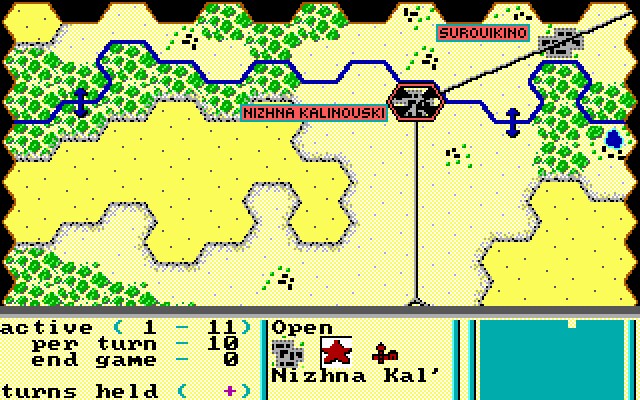
Battlefront
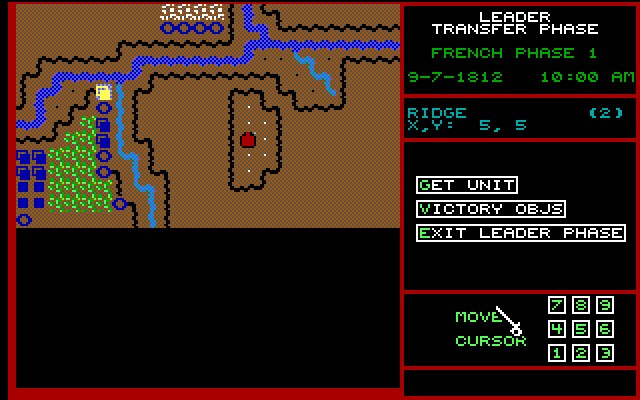
Battles of Napoleon
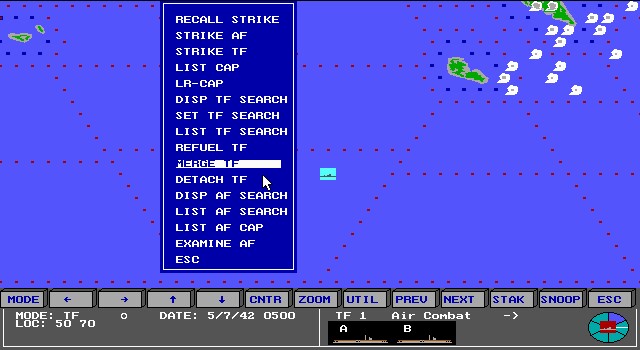
Carrier Strike
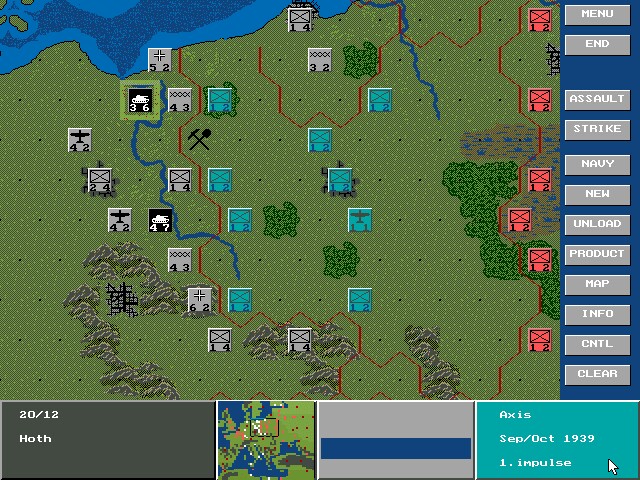
Clash of Steel
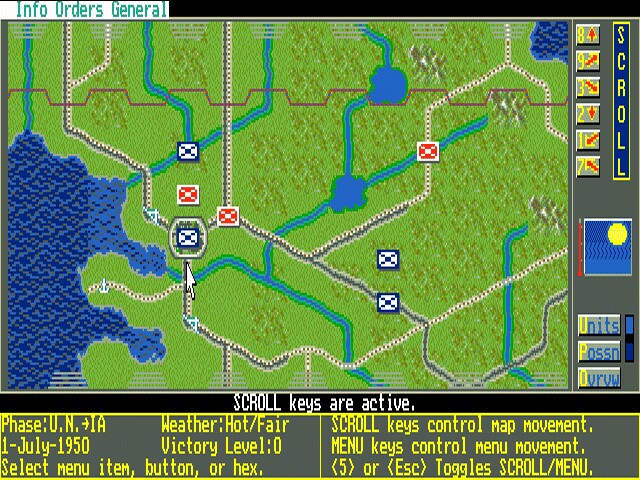
Conflict Korea
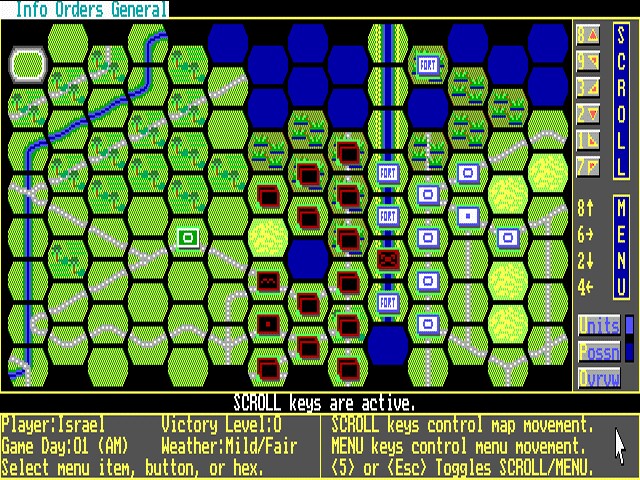
Conflict Middle East
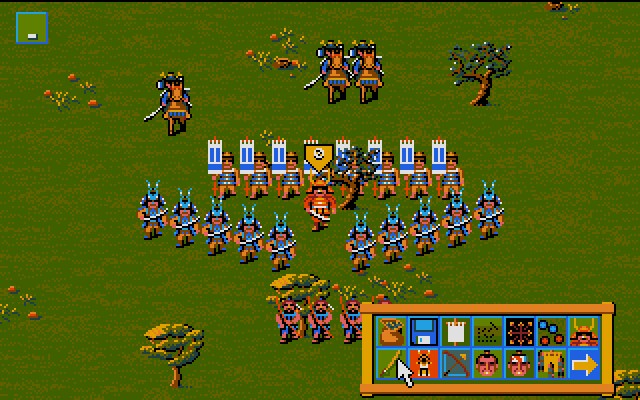
Conquest of Japan
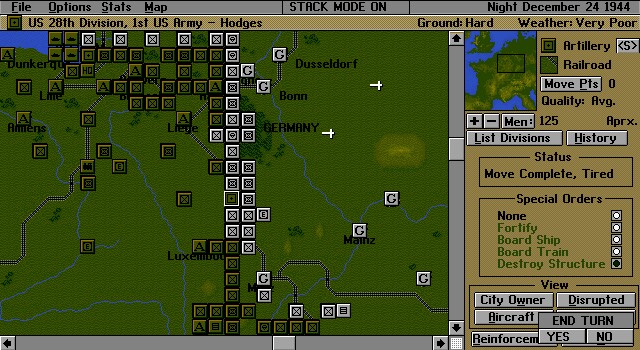
D-Day: The Beginning of the End
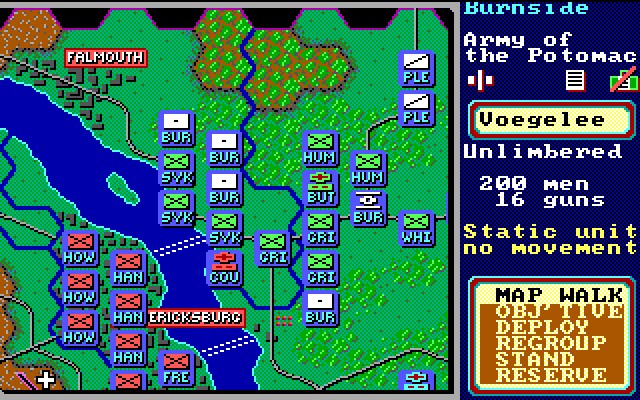
Decisive Battles of the American Civil War
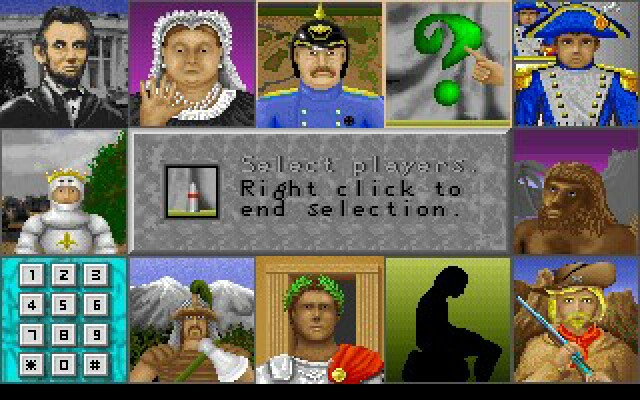
Global Domination
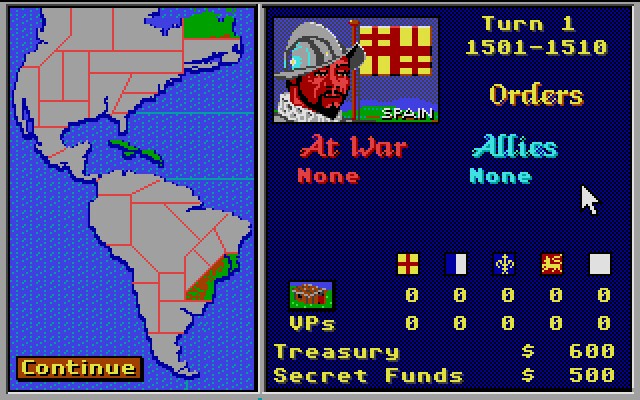
Gold of the Americas
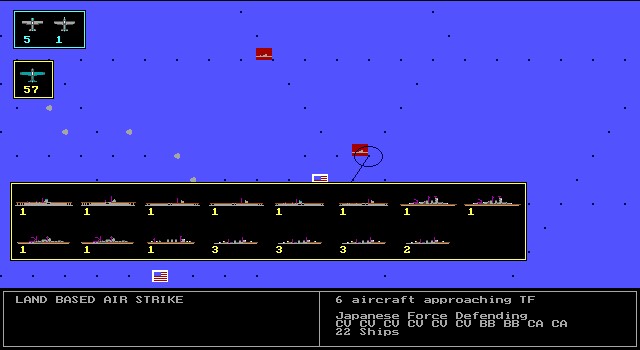
Pacific War
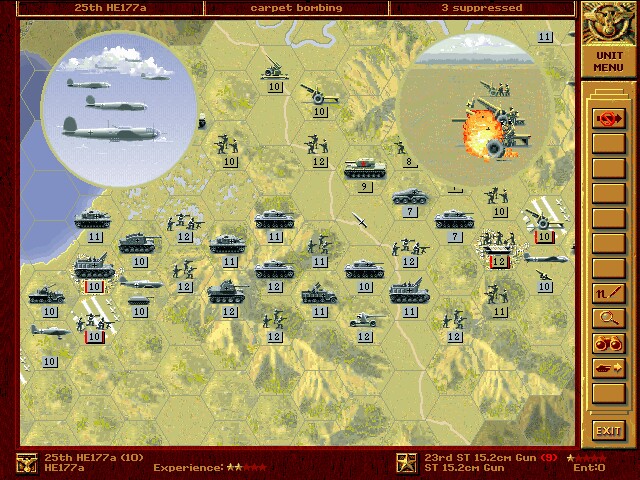
Panzer General
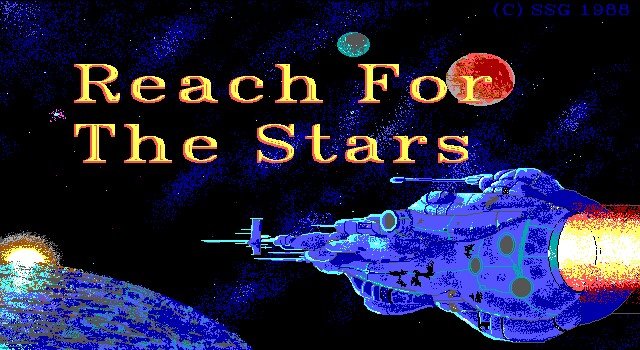
Reach for the Stars
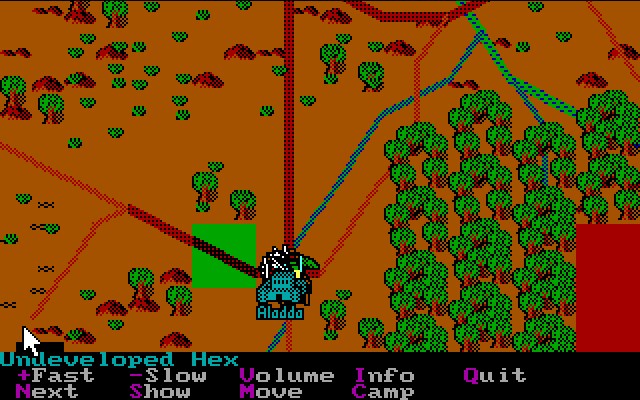
Sword of Aragon
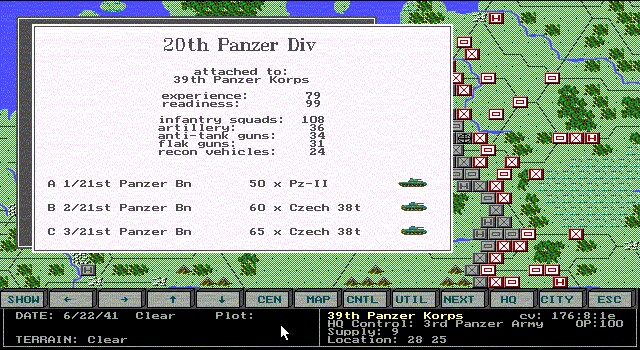
War in Russia
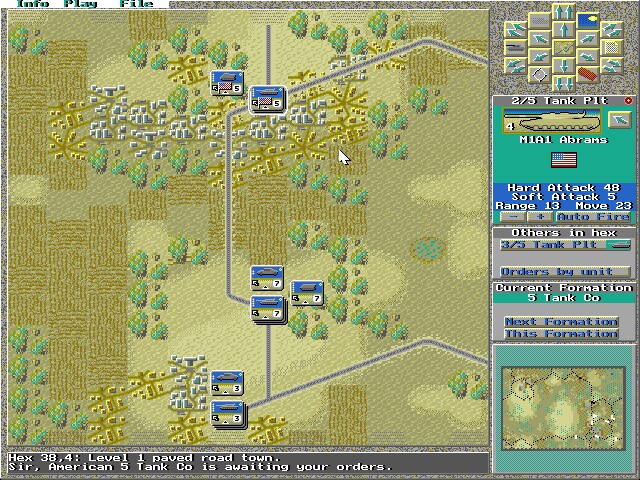
Wargame Construction Set II: Tanks
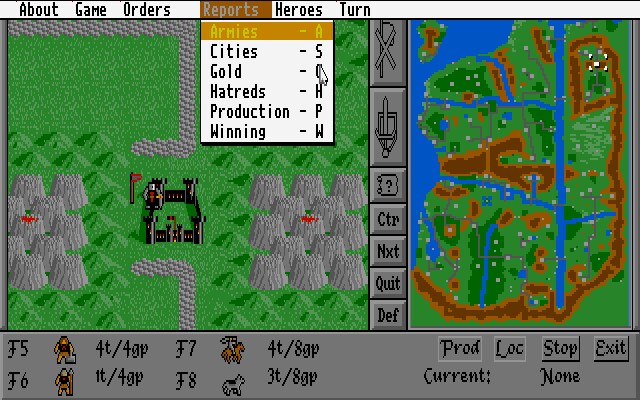
Warlords
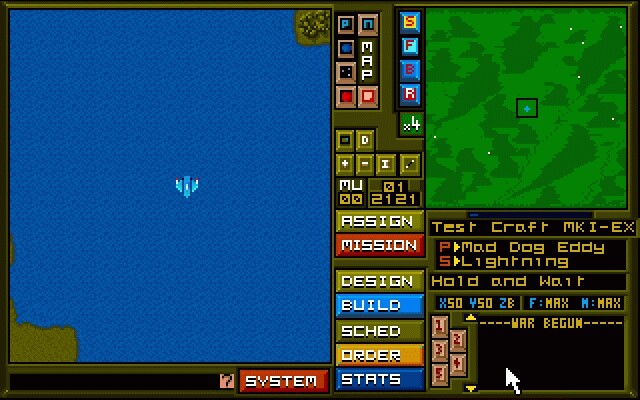
When Two Worlds War
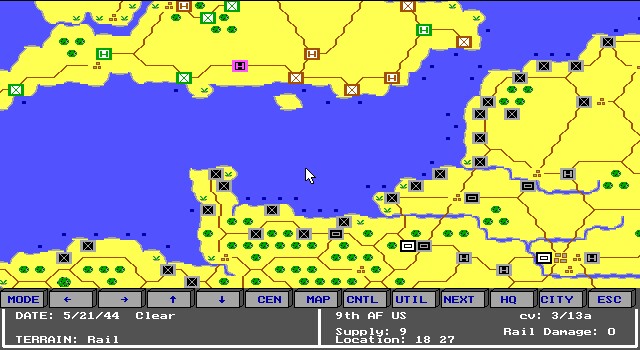
Western Front
Note: My compatibility CD does not alter the retail game or bypass copy protection. It allows the original media to install and run correctly on modern versions of Macintosh OSX.